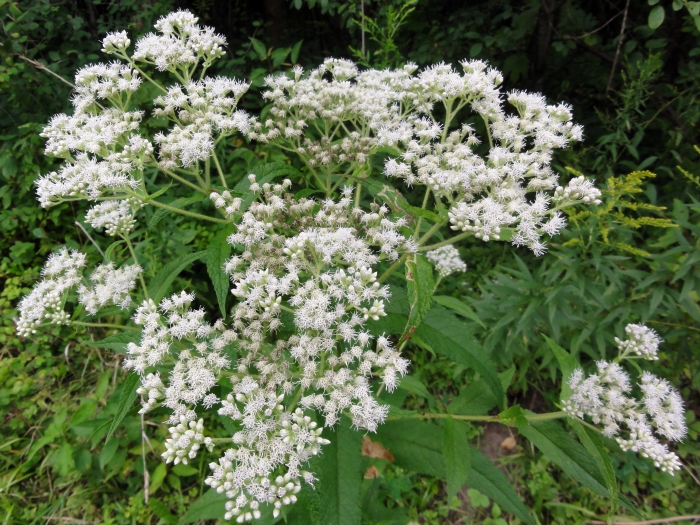Common Boneset
(Eupatorium perfoliatum)
Common Boneset (Eupatorium perfoliatum)
/
/

R. A. Nonenmacher
CC BY-SA 4.0








































































Estimated Native Range
Summary
Common Boneset is valued for its medicinal properties, as it has been traditionally used to treat fevers and other ailments. It is also an important plant for wildlife, providing nectar for various butterflies and serving as a larval host for some species. In the garden, it is often used in naturalized areas, rain gardens, and as part of pollinator-friendly plantings. It thrives in full sun to part shade and prefers moist to wet soils with good drainage. While it is not overly demanding, it will not tolerate dry conditions well. It is generally pest and disease-free but can occasionally suffer from powdery mildew in humid conditions.CC BY-SA 4.0
Plant Description
- Plant Type: Herb
- Height: 4-6 feet
- Width: 3-4 feet
- Growth Rate: Moderate
- Flower Color: White
- Flowering Season: Summer, Fall
- Leaf Retention: Deciduous
Growth Requirements
- Sun: Full Sun, Part Shade
- Water: Medium, High
- Drainage: Fast, Medium, Slow
Common Uses
Bee Garden, Bird Garden, Border Plant, Butterfly Garden, Deer Resistant, Low Maintenance, Rabbit Resistant, Showy Flowers, Water Garden
Natural Habitat
native to wet meadows, marshes, and the edges of streams and forests in the Central and Eastern United States and Southeastern Canada
Other Names
Common Names: Boneset, Feverwort, Thoroughwort, Indian Sage, Vegetable Antimony, Crosswort, Thoroughwax, Agueweed, Sweating Plant, Durchwachsener Wasserdost
Scientific Names: , Eupatorium perfoliatum, Eupatorium perfoliatum f. perfoliatum, Eupatorium perfoliatum var. colpophilum, Eupatorium truncatum, Eupatorium perfoliatum f. purpureum, Eupatorium perfoliatum var. perfoliatum, Eupatorium perfoliatum f. trifolium, Eupatorium perfoliatum f. truncatum, Eupatorium serotinum var. polyneuron
GBIF Accepted Name: Eupatorium perfoliatum L.